The Oppo Reno5 Pro+ 5G is the Chinese brand’s top-flight offering in the recently updated Reno line — the “+” after Pro indicates there’s a bit more under the hood on this reasonably priced (about 500 euros) smartphone. Running on the Qualcomm Snapdragon 865, it’s got a 6.55″ display refresh rate of up to 90 Hz, an array of four rear cameras, and a fast-charging 4500 mAh battery. Oppo doesn’t play up its audio offering in its marketing materials.
We put the Oppo Reno5 Pro+ through our rigorous DXOMARK Audio test suite to measure its performance both at recording sound using its built-in microphones, and at playing audio back through its built-in speakers. In this review, we will break down how it fared in a variety of tests and several common use cases.
Audio specifications include:
- Two stereo speakers (bottom right, side firing; top center, front firing)
- Type-C interface for headphones
About DXOMARK Audio tests: For scoring and analysis in our smartphone audio reviews, DXOMARK engineers perform a variety of objective tests and undertake more than 20 hours of perceptual evaluation under controlled lab conditions. This article highlights the most important results of our testing. Note that we evaluate both Playback and Recording using only the device’s built-in hardware and default apps. (For more details about our Playback protocol, click here; for more details about our Recording protocol, click here.)
Test summary
Scoring
Sub-scores and attributes included in the calculations of the global score.
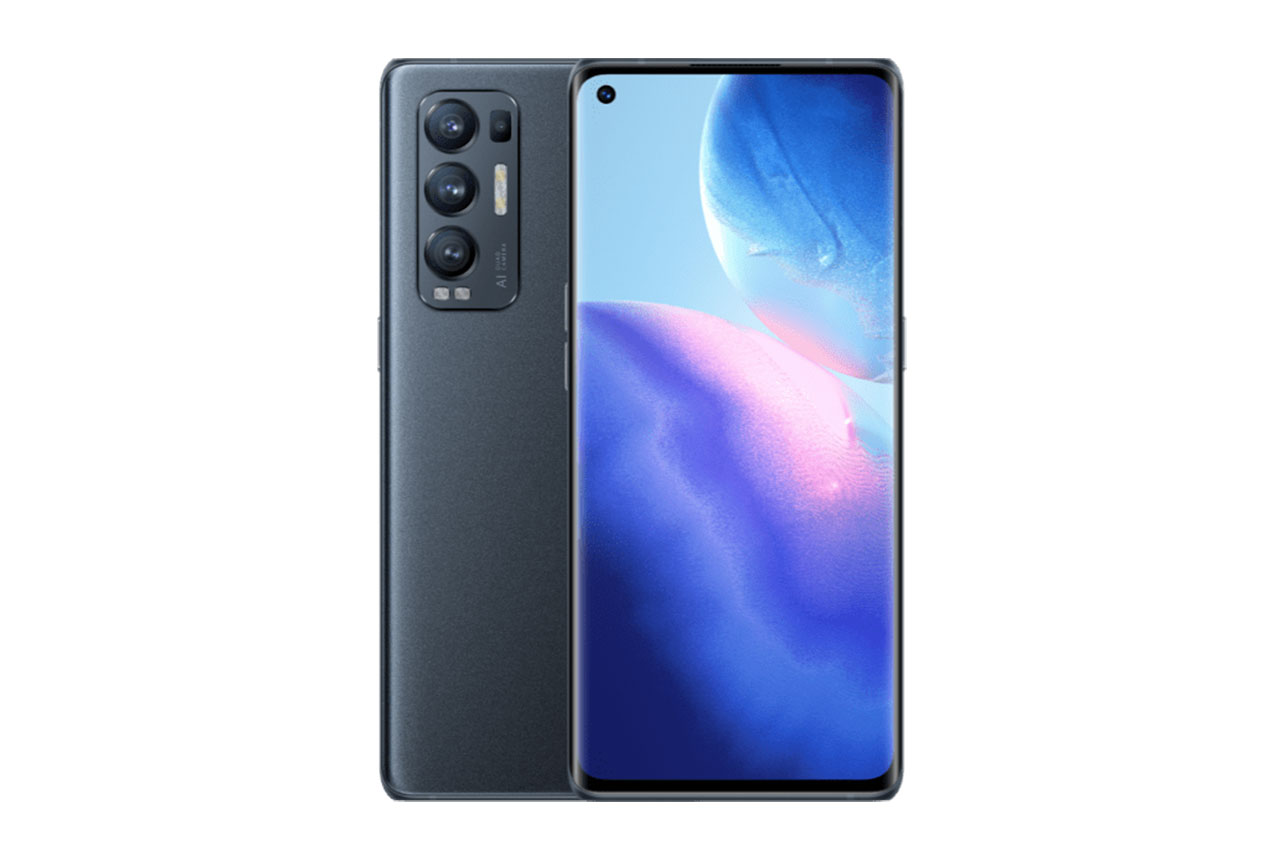
Oppo Reno5 Pro+ 5G


With a global score of 59, the Oppo Reno5 Pro+ 5G falls into roughly the lower third of our rankings for smartphone audio. It shares that score with such devices as the Huawei P40 Pro and the Lenovo Legion Phone Pro.
In playback testing, the Oppo Reno5 Pro+ produced accurate bass precision, correct localizability, and good volume performance. For a phone at this price point, it had a very good score in our artifacts attribute, producing few artifacts overall and matching the score of some much more expensive devices. In fact, in this case, it matched the artifacts score of the Black Shark 4 Pro, which at 81 points currently holds the highest global score in our smartphone audio data base.

As for drawbacks, the tonal balance of the Oppo device suffers from an enormous lack of bass and low-end extension, a factor that has carry-over effects in a number of attributes. At maximum volume, high-mids become very prominent and aggressive. The attack is imprecise and punch is weak. The stereo effect doesn’t rotate accordingly in inverted landscape, a factor in watching videos.
As a recording device, the Oppo Reno5 Pro+ does well overall when using the selfie video and memo app. The signal-to-noise ratio (SNR) was decent in most of the use cases we tested. The maximum recording volume without distortion was impressive.
The device produced unrealistic tonal balance, however, with low midrange prominence. A lot of phasing issues are present when using life video, producing unnatural-sounding audio. The dynamics performance is affected by strong compression and limiting. In life video, stereo is reversed and the wideness score is therefore zero.
Sub-scores explained
The DXOMARK Audio overall score of 59 for the Oppo Reno5 Pro+ 5G is derived from its Playback and Recording scores and their respective sub-scores. In this section, we’ll take a closer look at these audio quality sub-scores and explain what they mean for the user.
Playback
Timbre tests measure how well a phone reproduces sound across the audible tonal range and takes into account bass, midrange, treble, tonal balance, and volume dependency.
The Oppo Reno5 Pro+ had a sub-par timbre performance. Tonal balance is thrown off by a huge lack of bass and low-end extension. Treble and high-end extension are satisfactory, although slight hissing is noticeable, especially while watching movies.

Midrange is inconsistent because low mids are lacking, and as a consequence, classical instruments (for example) lack roundness, and voices tend to sound nasal. At maximum volume, high mids become very prominent and aggressive. When gaming, tonal balance suffers from a lack of high-end and low-end extension. You can see that absence at either end of the frequency spectrum in the chart below.

Dynamics
Oppo Reno5 Pro+ 5G
60
81
DXOMark’s dynamics tests measure how well a device reproduces the energy level of a sound source, and how precisely it reproduces bass frequencies.
Playback dynamics was not a strong suit for the Oppo Reno5 Pro+, and its score of 60 is below average. Attack was passable, although transients tend to be flattened on percussive content like snares. Base precision is decent, despite the lack of bass and low end. However, that lack of bass and low end impairs the punch performance.
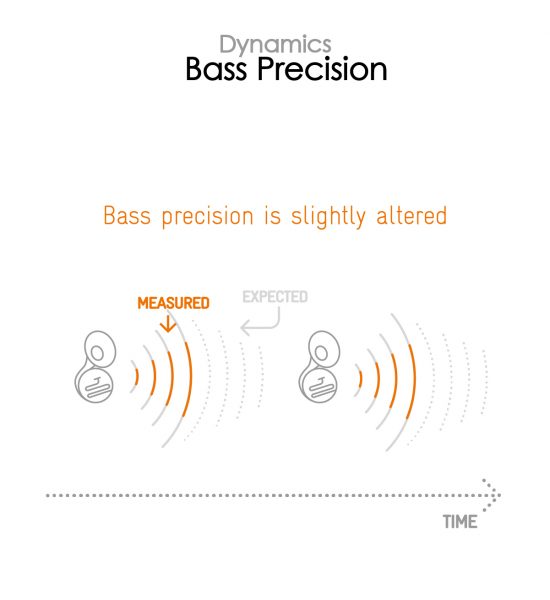
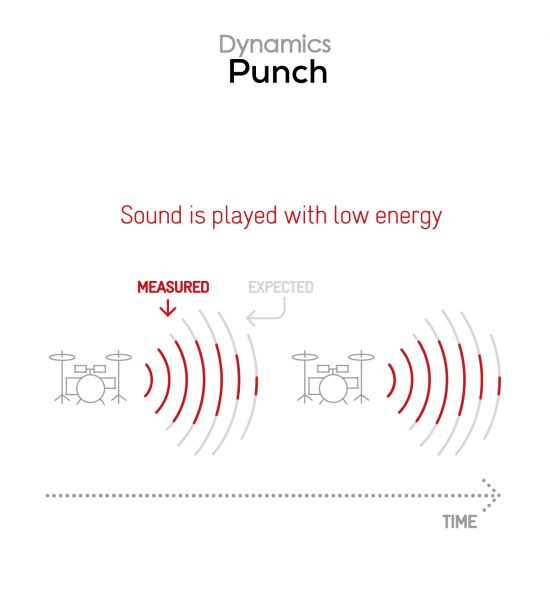
Sub-attributes for perceptual spatial tests include localizability, balance, distance, and wideness.
The Oppo Reno5 Pro+ 5G had a below-average score in the spatial attribute, although there were some glimmers of positivity. Localizability was decent, and the wideness was also adequate, although it should be noted that the sound doesn’t rotate accordingly if you are trying to watch a video in inverted landscape. Balance was good, although centered elements tended to be perceived as a bit high. Distance performance was correct.


Volume
Oppo Reno5 Pro+ 5G
71
91
Volume tests measure both the overall loudness a device is able to reproduce and how smoothly volume increases and decreases based on user input.
Volume was a bright spot for the Oppo device. Maximum volume is good, although not quite as loud as the top-scoring devices. At minimum volume, highly dynamic content such as classical music can be heard properly, meaning some care was put into tuning that first step.
| Hip-Hop | Classical | |
| Oppo Reno5 Pro+ 5G | 74.2 dBA | 70.5 dBA |
| Oppo Reno4 Pro 5G | 75.4 dBA | 72.1 dBA |
| POCO X3 NFC | 73.3 dBA | 69 dBA |

Artifacts
Oppo Reno5 Pro+ 5G
89
113
Artifacts tests measure how much source audio is distorted when played back through a device’s speakers. Distortion can occur both because of sound processing in the device and because of the quality of the speakers.
Artifacts is a very strong category for the Oppo Reno5 Pro+. Its score is only four points down from the top two scorers in DXOMARK’s rankings for this attribute — the Asus ROG Phone 5 and the Samsung Galaxy S21 Ultra 5G (Exynos). That’s especially impressive considering the cost difference.
Noise is slightly elevated on the reference tracks. There is an unwanted high-pitched sine that our engineers detected when playing synthetic signals. When it comes to user artifacts, the right speaker can be occluded by parts of the hand when gaming.
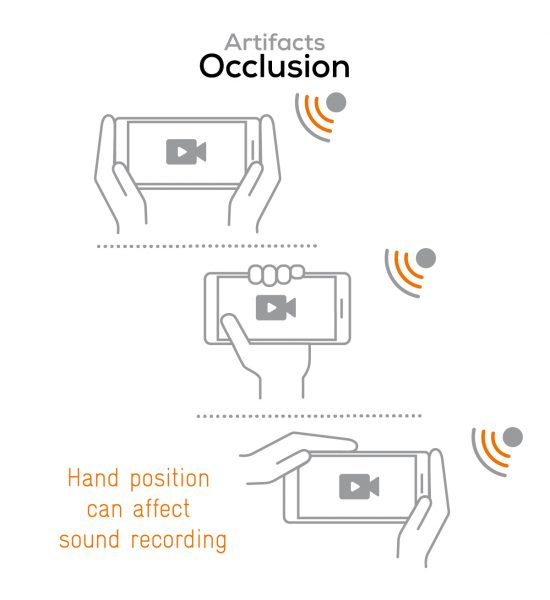
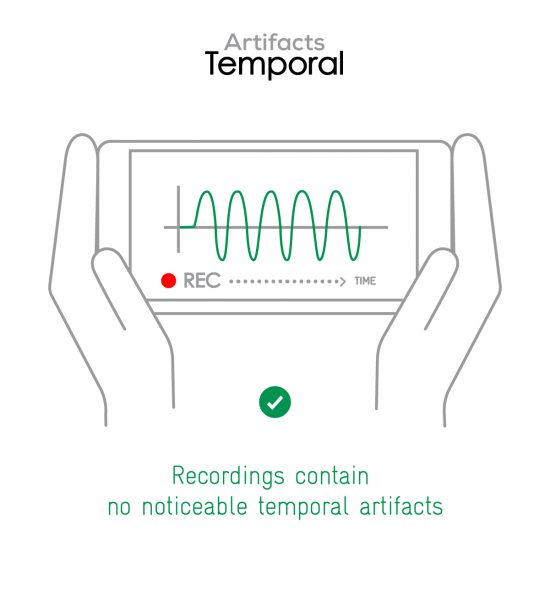
Recording

Timbre
Oppo Reno5 Pro+ 5G
63
91
As a recording device, the Oppo Reno5 Pro+ does an average job of capturing timbre, with a few notable flaws. When recording in regular conditions (in our simulated use cases), tonal balance is unrealistic and midrange focused, with low midrange prominence and a lack of clarity. A lot of phasing issues are present when recording in life video mode, which play a large part in the unnatural aspect of the sound.
In selfie mode and when using the memo app, tonal balance is more natural and less affected by phasing issues.

For recordings made in a high sound pressure level (SPL) environment like an electronic music concert, treble is inconsistent and has multiple bumps and notches. The midrange sounds hollow, and bass lacks low end. Tonal balance is very unnatural and muffled.

Dynamics
Oppo Reno5 Pro+ 5G
56
81
The Oppo smartphone turned in a middle-of-the-road performance in recording dynamics. The SNR is decent in most use cases, even if muffled voices tend to blend in with the background, impairing the performance. The sound envelope is affected by strong compression and limiting, especially in a scenario with loud background, resulting in plosives that are very imprecise.
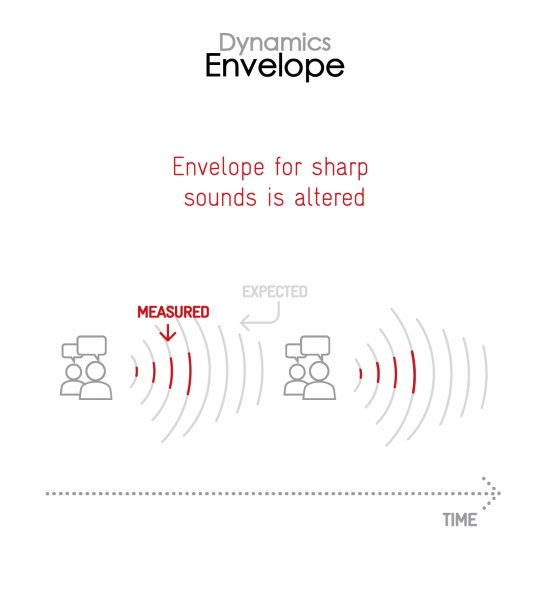
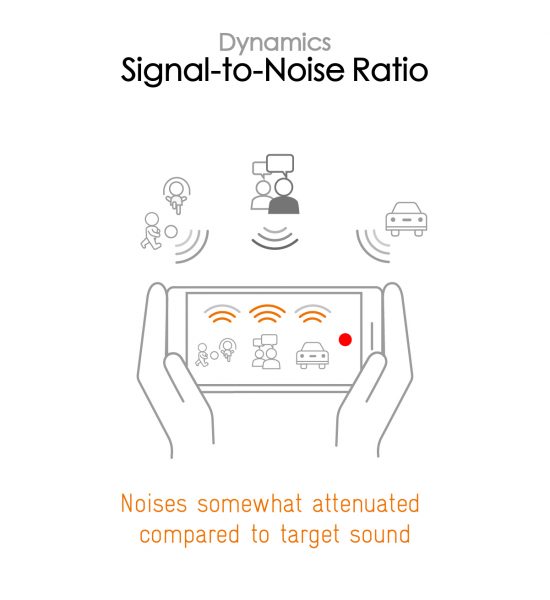
At high SPL, envelope performance is quite poor, as heavy compression crushes transients and flattens dynamics.

Spatial
Oppo Reno5 Pro+ 5G
45
78
The Oppo Reno5 Pro+ doesn’t do very well in the spatial attribute. In life and selfie videos, imprecise sound sources lead to very limited localizability. In life video, stereo is reversed, rendering the wideness score zero. In selfie video, wideness is poor because the audio scene is so narrow. Distance is hindered by prominent low midrange and strong compression.


Volume
Oppo Reno5 Pro+ 5G
67
99
While the Oppo Reno5 Pro+ had a below-average score in our recording volume attribute, it did have a couple of bright points. Maximum recording volume without distortion is actually very good, and recorded files have a good loudness in most of the tested use cases.
Here are our test results, measured in LUFS (Loudness Unit Full Scale). As a reference, we expect loudness levels to be above -24 LUFS for recorded content.
| Meeting | Life Video | Selfie Video | Memo | |
| Oppo Reno5 Pro+ 5G | -25.5 LUFS | -22.9 LUFS | -21.9 LUFS | -21.4 LUFS |
| Oppo Reno4 Pro 5G | -30 LUFS | -22.4 LUFS | -20.8 LUFS | -23.5 LUFS |
| POCO X3 NFC | -27.2 LUFS | -20.2 LUFS | -18.7 LUFS | -19.3 LUFS |

Artifacts
Oppo Reno5 Pro+ 5G
49
97
In contrast to its sterling performance in the playback artifacts attribute, the Oppo Reno5 Pro+ had a below-average showing in recording artifacts. Multiple temporal artifacts were perceived, especially heavy compression and limiting in the loud background noise. Spectral artifacts are also in evidence, with phasing issues that induce a very unnatural sound cropping up in life videos. Slight clipping is noticeable on shouting voices.
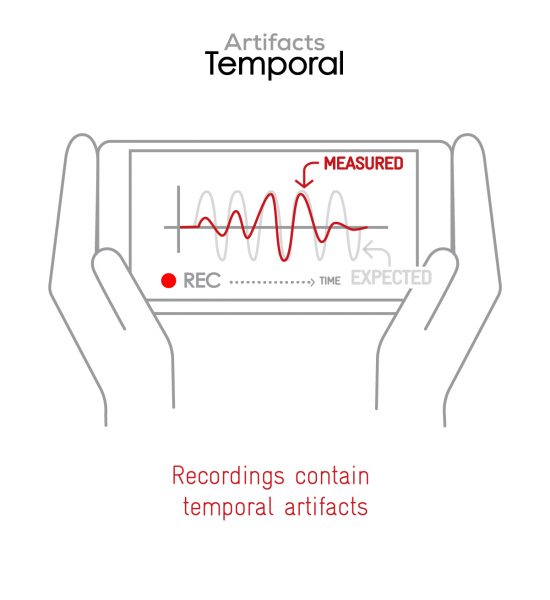
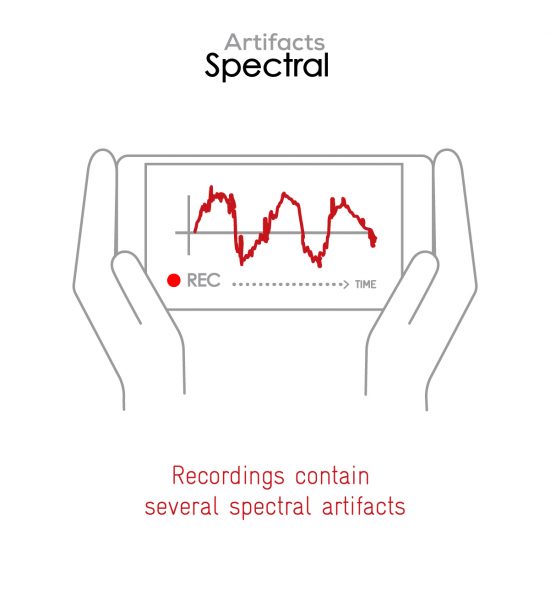
In the high SPL scenario, heavy compression and limiting induce a pumping effect, especially on kick or bass impacts. Distortions and strong resonances in treble lead to an aggressive sound.

Background
Oppo Reno5 Pro+ 5G
23
60
The Oppo device turned in a poor performance in the background attribute. In life video, strong compression, limiting, and phasing issues impair the rendition of the background. Tonal balance is also muffled and not realistic, although its performance when using the selfie video and memo app was better.
Conclusion
For some attributes such as playback artifacts, the Oppo Reno5 Pro+ 5G was very good at this price point, but in others there is a need for some revision, especially in addressing tonal balance in playback and in improving the recording of life videos (among other things). That said, the Oppo Reno5 Pro+ 5G was functional in most use cases.
Playback
Pros
- Very few artifacts
- Correct localizability
- Good volume performance at this price point
Cons
- Tonal balance suffers because of lack of bass and low-end.
- At maximum volume, high mids become very prominent and aggressive.
- Stereo doesn’t rotate in inverse landscape.
Recording
Pros
- Solid performance in selfie video and memo app
- Decent SNR in most tested use cases
- Very good maximum recording volume without distortion
Cons
- Tonal balance is unrealistic, with low midrange prominence.
- Lots of phasing issues in life video mode
- Dynamics performance is hindered by strong compression and limiting.


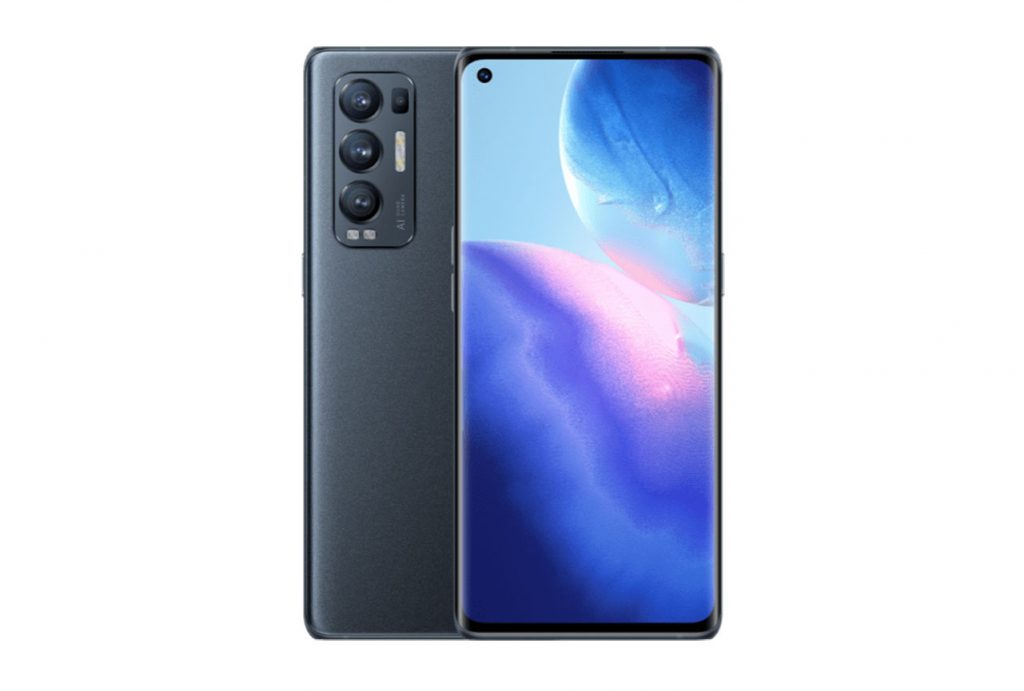
DXOMARK encourages its readers to share comments on the articles. To read or post comments, Disqus cookies are required. Change your Cookies Preferences and read more about our Comment Policy.